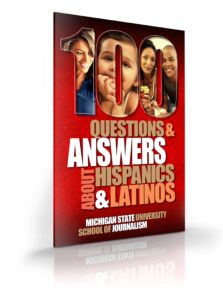New Arkansas Gov. Sarah Huckabee Sanders caused something of a new-year kerfuffle by banishing the use of “Latinx” by state government as one of her first acts in office.
So, why do we have the word and why did Sanders banish it? And how does Hispanic fit into this discussion?
It’s all very complicated.
 Latinx is a derivation of the Spanish nouns Latino and Latina. As a language where all nouns are either male or female, their meaning is essentially the same. Latino is the shortened form of latinoamericano, or Latin American in English. The Census Bureau has wrestled for generations with how to enumerate people who are from either Latin or Central America.
Latinx is a derivation of the Spanish nouns Latino and Latina. As a language where all nouns are either male or female, their meaning is essentially the same. Latino is the shortened form of latinoamericano, or Latin American in English. The Census Bureau has wrestled for generations with how to enumerate people who are from either Latin or Central America.
Latino applies to people from those countries and is a geographic indicator, but what does that do for people in the Caribbean?
Hispanic is a language indicator, meaning people from Spanish-speaking countries. But that leaves out people from, for example, Brazil, a Portuguese speaking country, and Haiti. So, at large, neither term is good fit for everyone the terms are meant to include.
Latino is a misfit in a different way. It is Spanish, a language that uses gendered nouns, unlike English.
Because Latino is a name for people, and because the “o” makes the noun it male, Latina must be used for females. With a mixed group of females and males, the noun Latino was used. But that umbrella usage excludes women, just as calling all firefighters “firemen” would do in English.
A further issue is our recently raised consciousness about people whose identity is nonbinary or fluid. Neither Latino or Latina really fits them.
So Latinx came to mean all Latinas and Latinos, including people whose identity is not centered on one gender or whose gender identity changes.
And we are still left with Hispanic. It does not have the gender issues, but it is still a linguistic misfit.
So what should you do? Try to match your words to the people you are communicating about or with. There is not a clear demarcation on that, by the way. Neither Latino and Latina nor Hispanic holds a string majority. In s0me regions of the United States, there are regional preferences.
The lack of a community consensus is one reason Sanders said she is banishing Latinx. Others are its awkward fit with spoken Spanish and purists who see it as a corruption of the language.
And ask your subjects, especially if they are individuals, what they prefer. They might say “Cuban American,” “Chicana,” “Texano” or “Boricua.” That last one is not Spanish. It comes from the indigenous Taíno Indians and is from Borikén, their name for Puerto Rico.
Difficult yes, but with an additional question of two, we can come closer to choosing the best term.
Learn more in “100 Questions and Answers About Hispanics and Latinos,” available from Amazon.



















